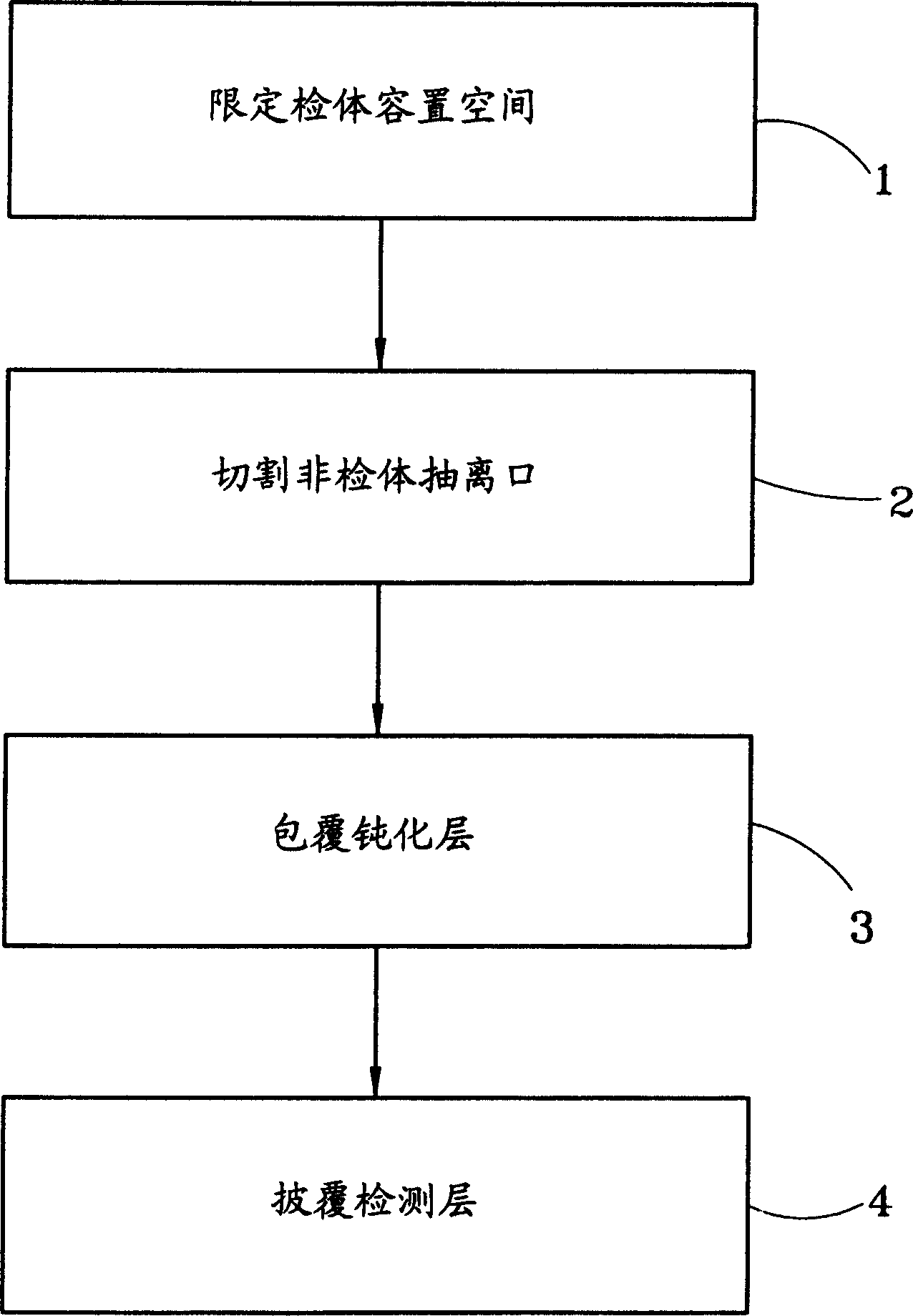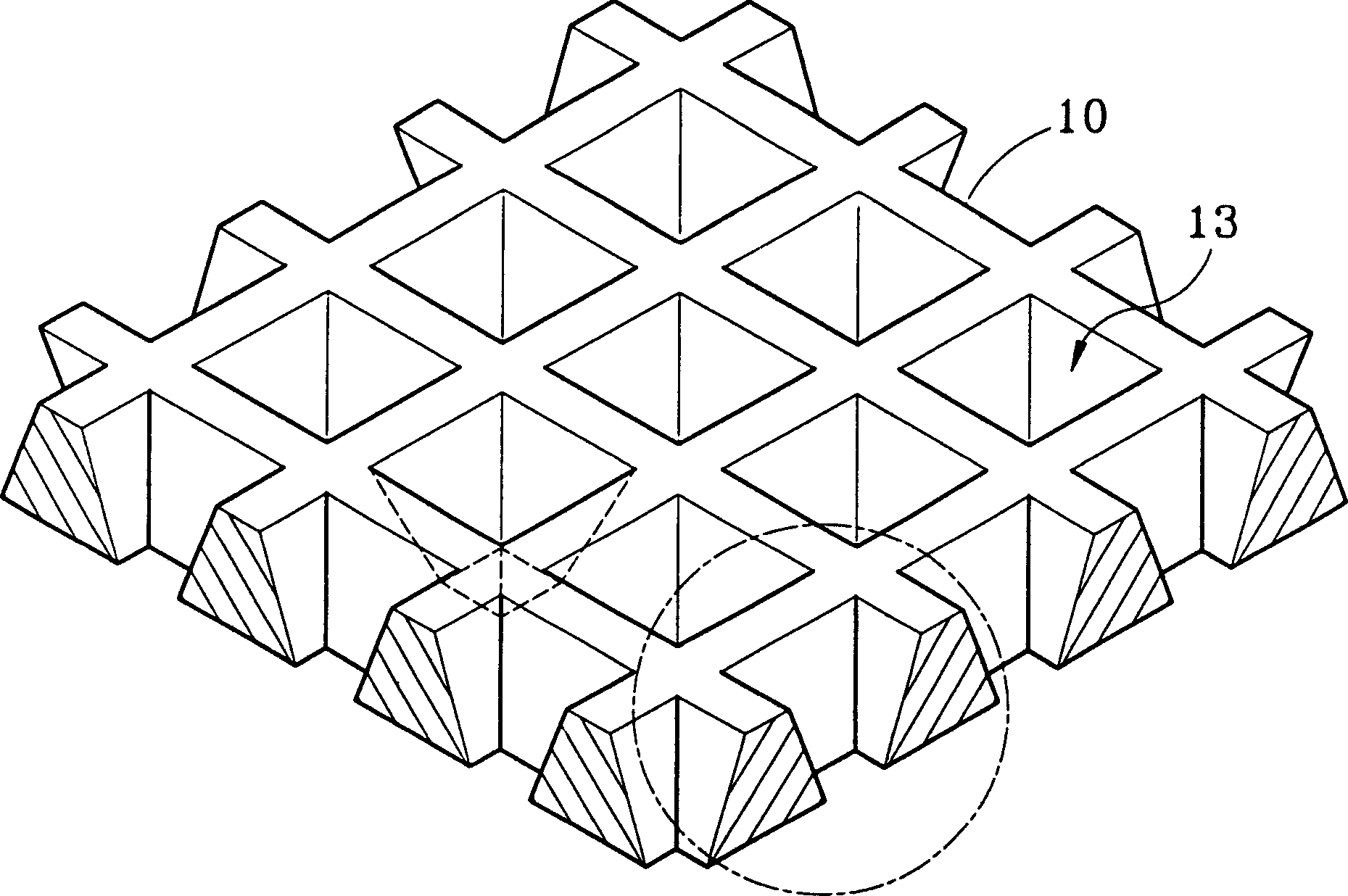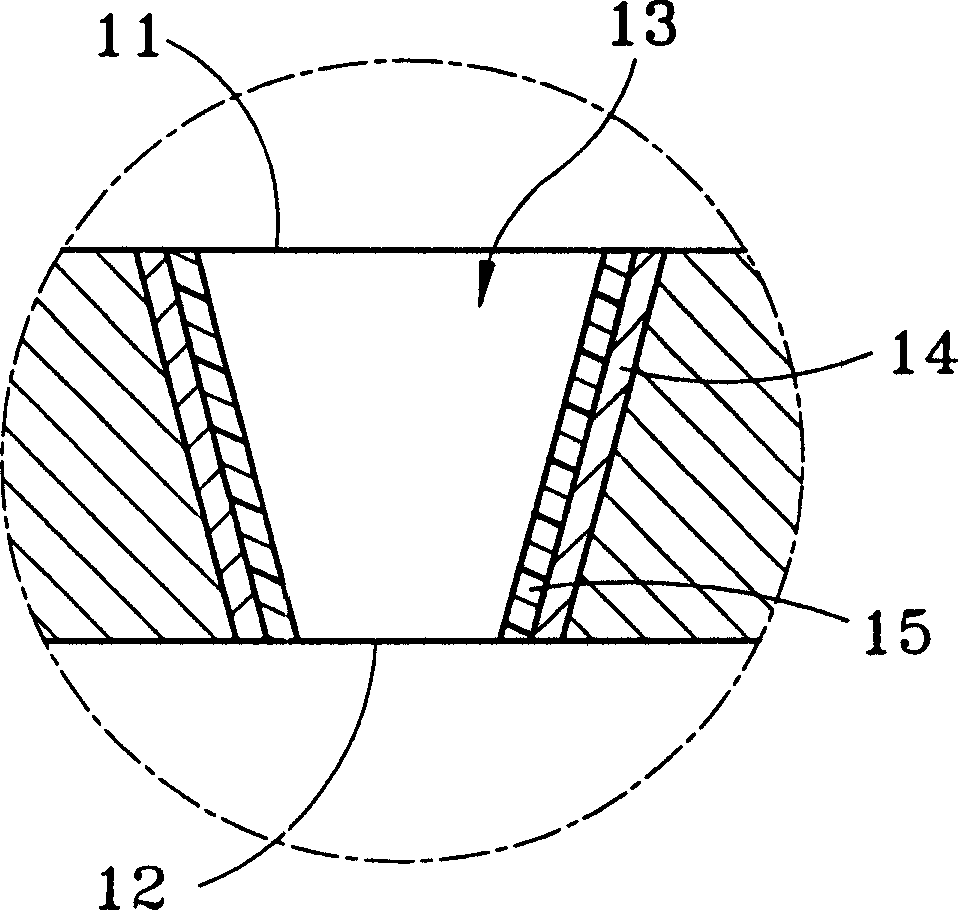Microbe detecting cell chip
A microbial detection and cell chip technology, applied in biological testing, microbial determination/inspection, biochemical equipment and methods, etc., can solve problems such as affecting detection accuracy, difficulty in large-scale detection, and damage to samples to be examined and biological probes
- Summary
- Abstract
- Description
- Claims
- Application Information
AI Technical Summary
Problems solved by technology
Method used
Image
Examples
Embodiment Construction
[0017] see figure 1 , 2-1 , 2-2 are schematic diagrams of the manufacturing process, three-dimensional appearance and partially enlarged cross-section of the present invention. As shown in the figure: the manufacturing method of the aforementioned biochip includes the following steps: defining the sample accommodating space 1, which is to cut the length and width of the silicon wafer on the chip with a length and a width of 2 cm each, in the manner of wafer etching and array arrangement ( 100 points in length and width, 10,000 points in total) defines a downwardly tapering sample indwelling space on the microbial detection chip 10, above which is a drop inlet 11, and the aforementioned etching technique can be wet etching or dry etching , Wet etching is performed by chemical reaction, while dry etching is performed by physical action.
[0018] After the specimen indwelling space is completed, the non-specimen withdrawal port 2 is cut, and the bottom of the indwelling space i...
PUM
 Login to View More
Login to View More Abstract
Description
Claims
Application Information
 Login to View More
Login to View More - R&D
- Intellectual Property
- Life Sciences
- Materials
- Tech Scout
- Unparalleled Data Quality
- Higher Quality Content
- 60% Fewer Hallucinations
Browse by: Latest US Patents, China's latest patents, Technical Efficacy Thesaurus, Application Domain, Technology Topic, Popular Technical Reports.
© 2025 PatSnap. All rights reserved.Legal|Privacy policy|Modern Slavery Act Transparency Statement|Sitemap|About US| Contact US: help@patsnap.com



